SUMMARY
This is AI generated summarization, which may have errors. For context, always refer to the full article.
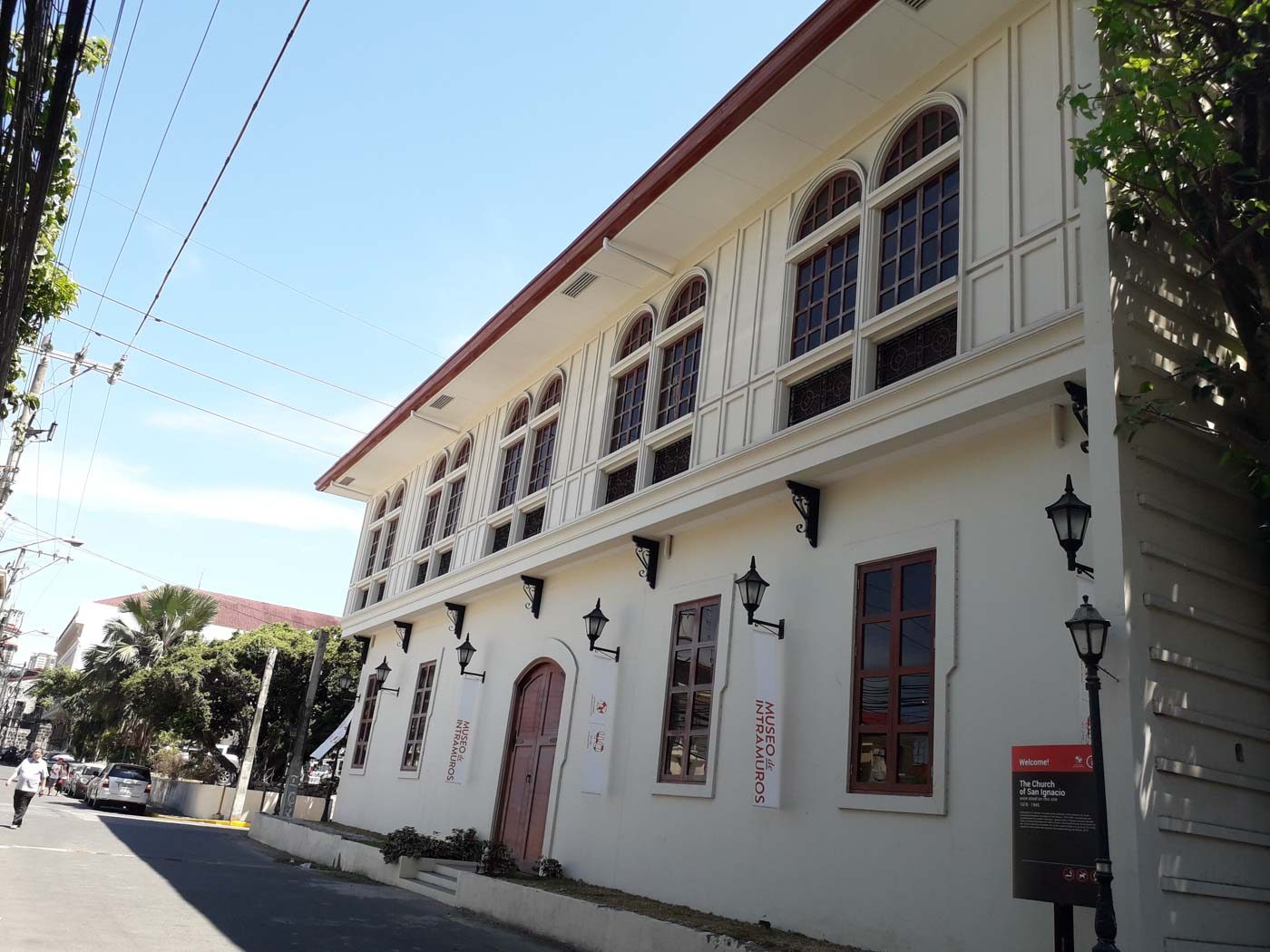
MANILA, Philippines – Manila’s famous fortress city has something new to offer history buffs and travelers: Museo de Intramuros.
The new museum will open its doors to the public on Thursday, May 2, with admission kept free for its first 6 months of operation. Operating hours are from 9 am to 5 pm, Tuesday to Sunday.
Behind the museum’s towering wooden front doors are rooms full of religious paintings by early Filipino artists, antique religious vessels and carvings, and an exhibit about Intramuros’ evolution as a city.
All these are part of the collection of Intramuros Administration (IA), amassed through the years beginning with the efforts of its founding administrator Jaime Laya in the late 1970s.
Media were able to take a sneak peak on Tuesday, April 30, and speak with IA Administrator Guiller Asido and museum staff.
Museo de Intramuros is found on the corner of Arzobispo and Anda streets, rising from the site of the old San Ignacio Church and Jesuit Mission House.
Time has failed to completely erase these old structures, built between 1878 and 1889. The museum kept intact an ancient cistern and arch, bringing visitors closer to colonial-era Intramuros.
Most of the collection currently on display are religious artifacts and art made by Filipinos during the Spanish colonial period.
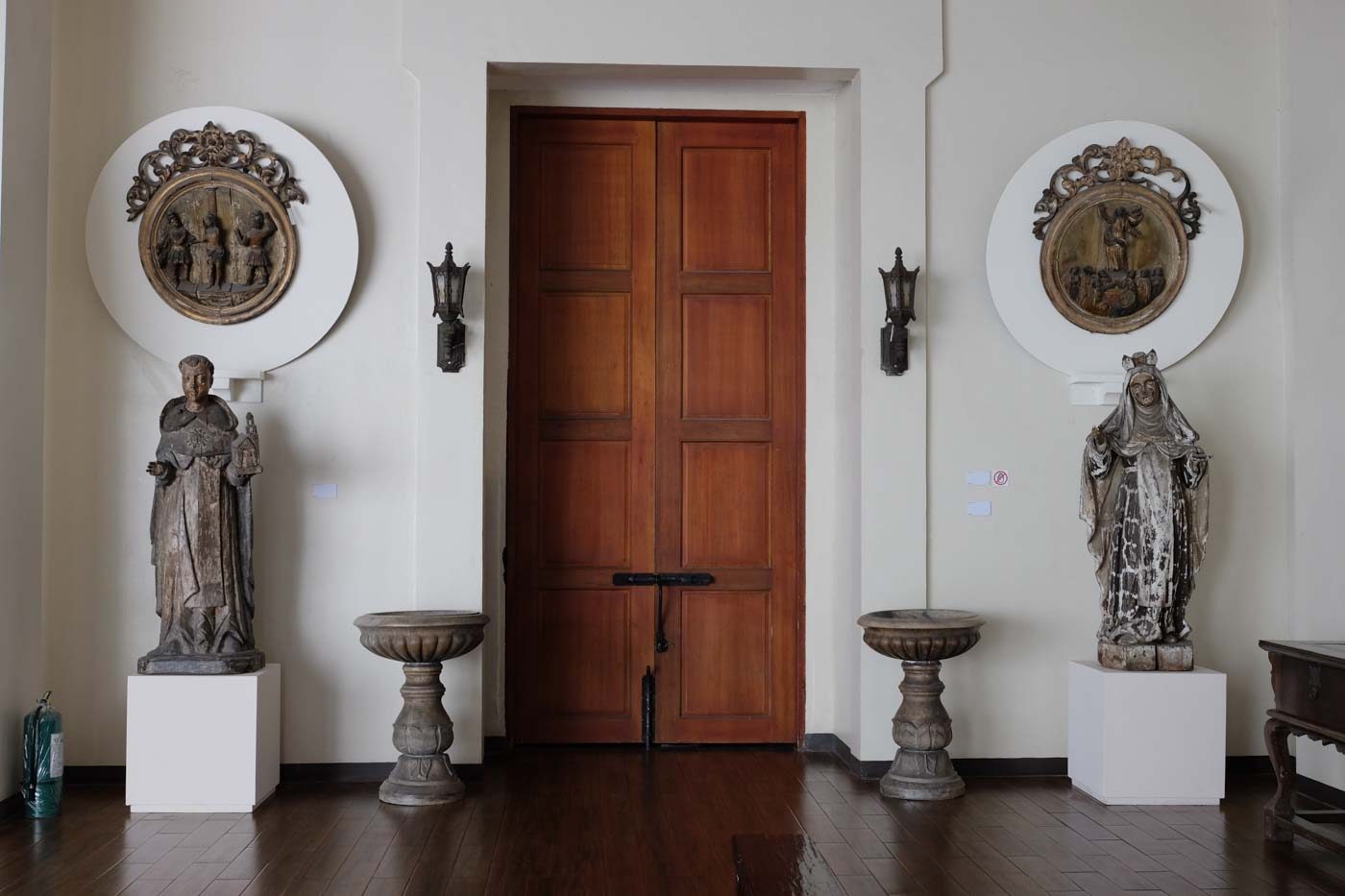
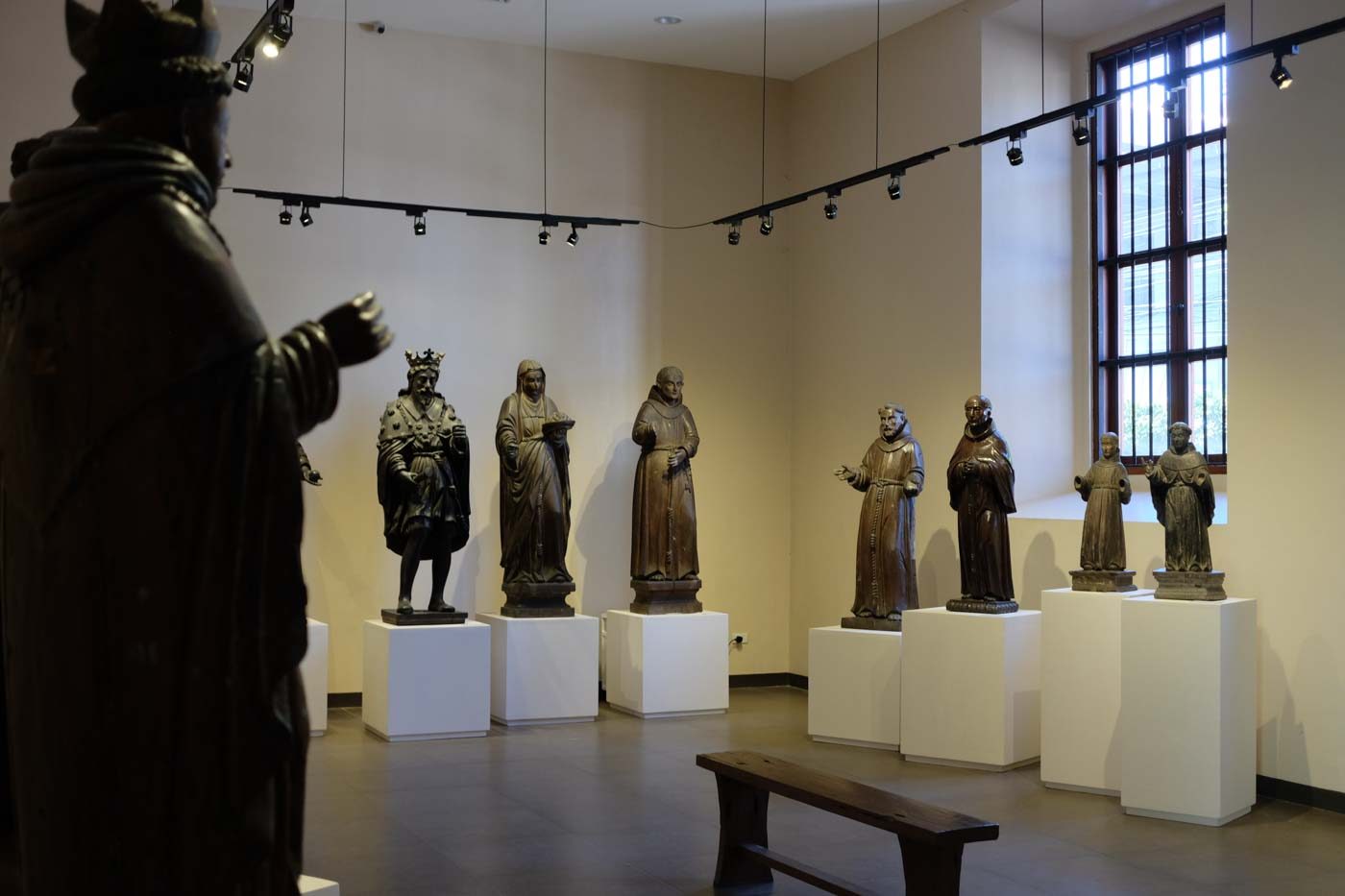
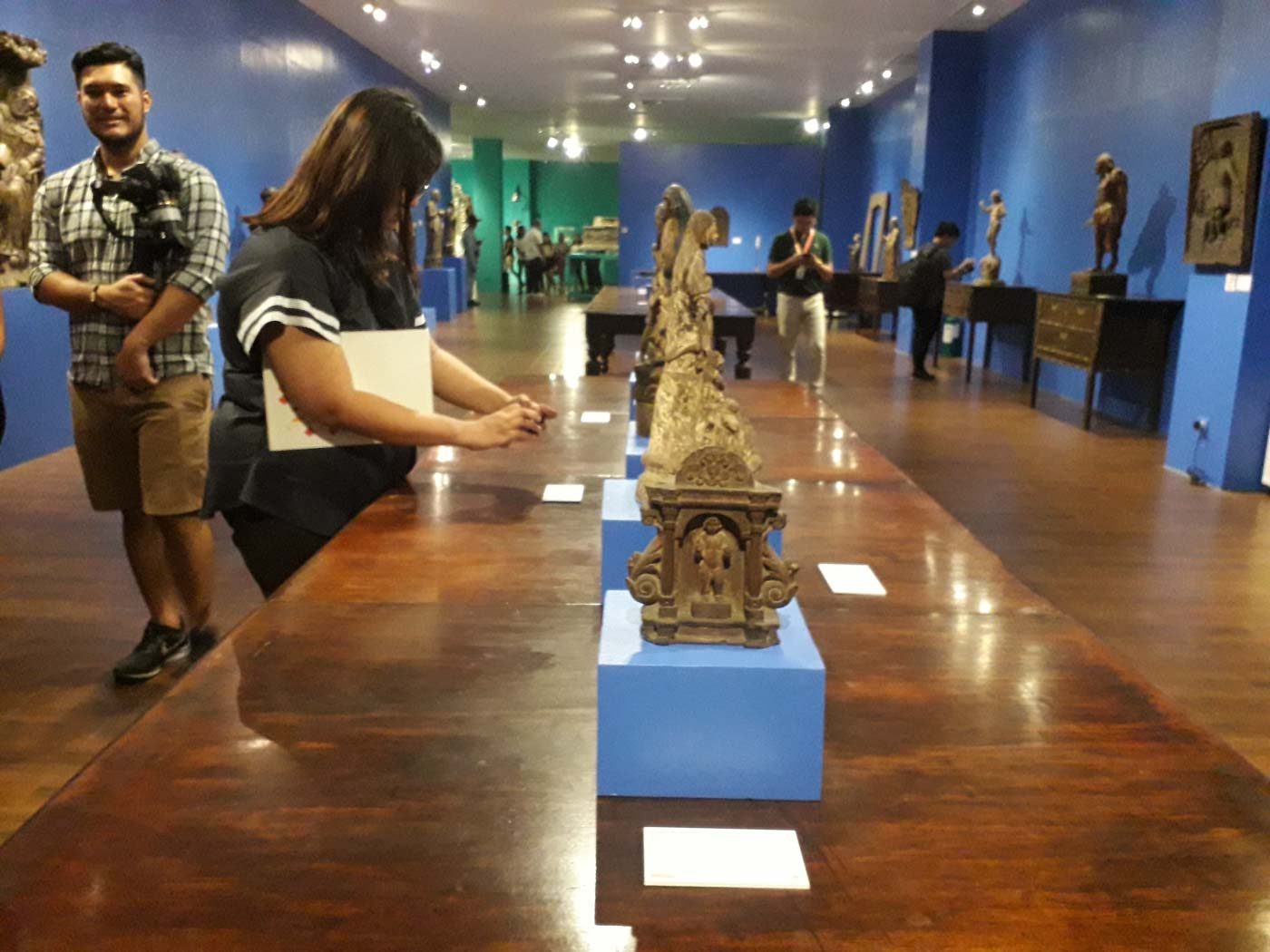
Paintings of saints, the Virgin Mary, and the Holy Trinity are housed in a brightly-painted room that flows into an exhibit of wooden and ivory carvings.
In a turquoise room, silver altar ornamentation, baptismal shells, host containers, cruets, and ciboriums hark back to the days when Philippine parishes would try to outdo each other in church splendor.
Paintings and carvings made using Molave wood or indigenous dyes showed how Filipino artistry evolved over time and even from region to region.
But even more compelling was how some early works showed how early Filipinos made the Catholic faith, faith of their colonizers, theirs.
One palm-sized wooden carving of Jesus on the cross showed him wearing not a crown of thorns, but the native headband worn by some Filipino males at the time.
Intramuros, through the years
WATCH: A peek into the exhibit about the history of Intramuros in the soon-to-open Museo de Intramuros. @rapplerdotcom pic.twitter.com/vJb23xMRs6
— Pia Ranada (@piaranada) April 30, 2019
On the museum’s third floor is an exhibit about the history of Intramuros as a city.
You’ll find charming miniature models of churches that stood within Intramuros’ walls before World War II (yup, it wasn’t just Manila Cathedral and San Agustin Church).
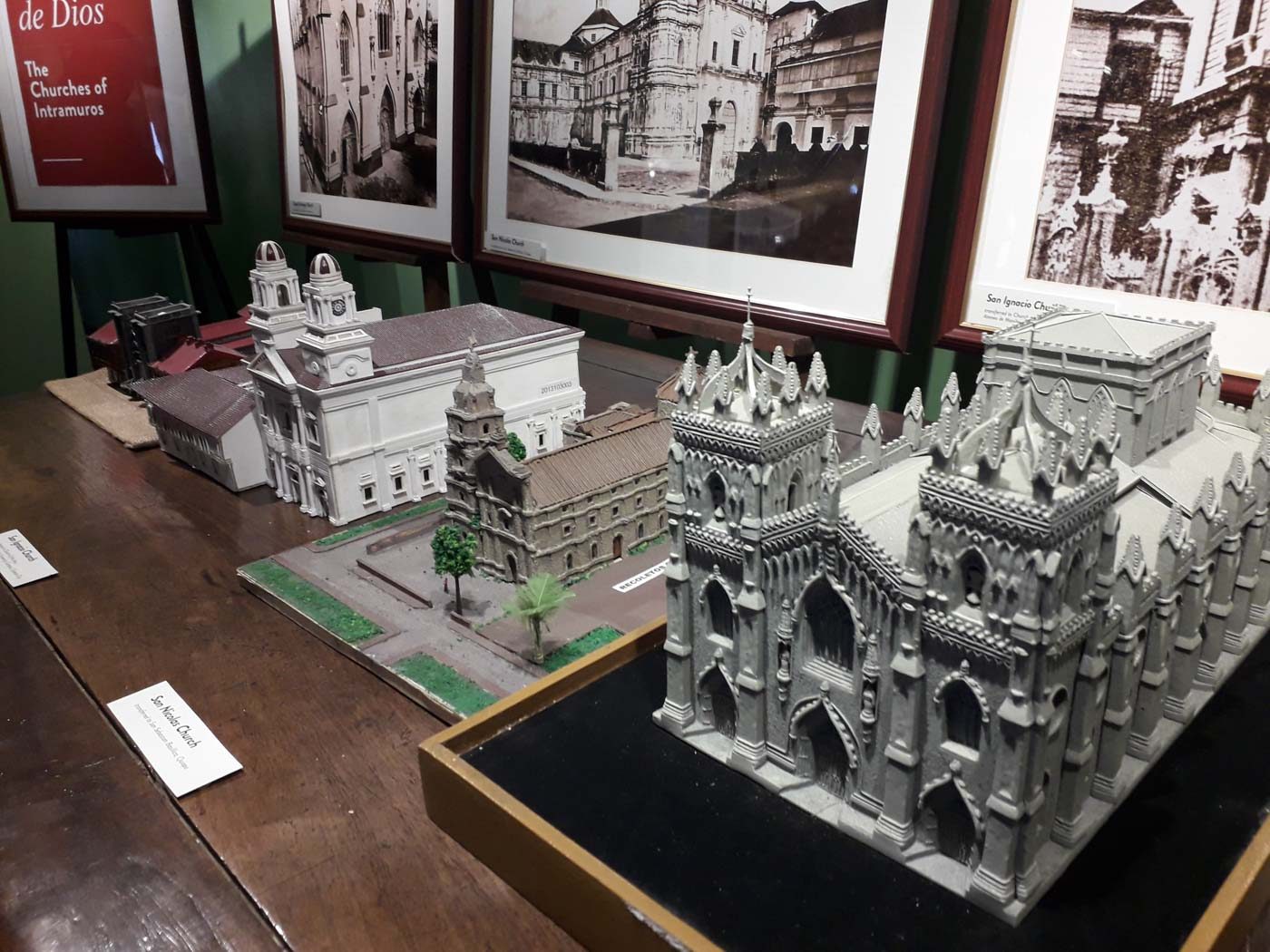
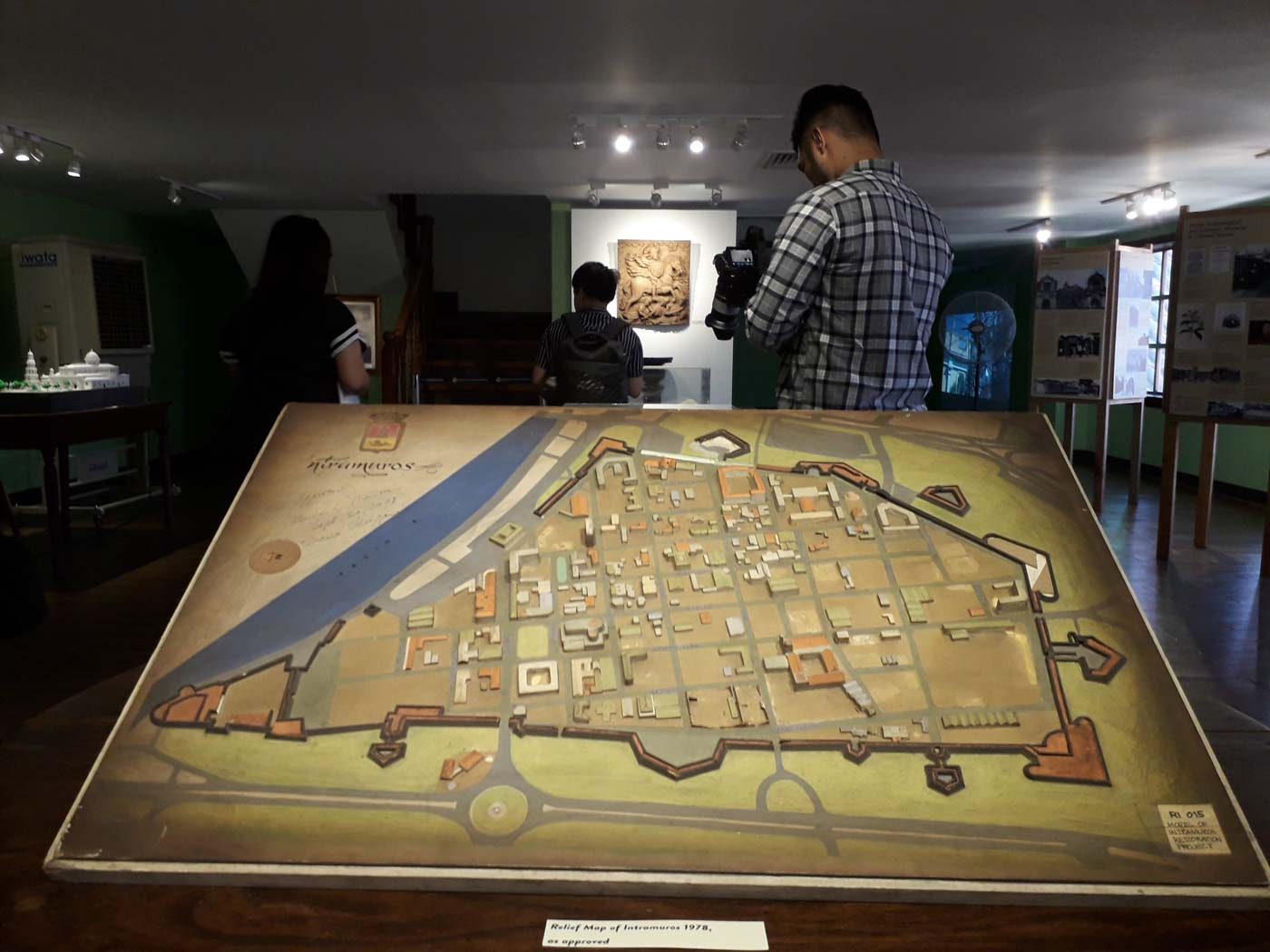
There’s a sketch of Fort Santiago’s iconic arch before and after its reconstruction in the 1970s and paintings of the people you were likely to bump into in the streets of Intramuros – from milk vendor to guardia civil.
While one part of the room relives the past, the other looks to the future of Intramuros.
On display are Intramuros Administration’s hip promotional materials about the Walled City of today and what new activities, establishments, and offerings can be found among its classic landmarks.
It also tells of the IA’s new project: turning 16th-century stone storage chambers into a modern creative hub called the Maestranza Complex.
The Maestranza Wall is a 270-meter-long stone structure skirting the Pasig River which, in its heyday in the 1500s, functioned as a storehouse for the Manila-Acapulco trade and barracks for soldiers.
It was heavily damaged in World War II and, for the past 6 years, is being rehabilitated by the government.
But come 2020, it may become a new space for Filipino creatives. The IA and its partner, Creative Economy Council of the Philippines (CECP), want to turn the Maestranza Wall’s 44 chambers into rooms for architecture, fashion design, graphic design, and advertising firms and groups. It’s part of IA’s push to turn Intramuros into a “creative heritage district,” much like what is happening to Escolta with its old buildings housing art fairs and creative groups.
Museo de Intramuros proves the Walled City has not stopped evolving since its early days as Rajah Soliman’s wooden fort.
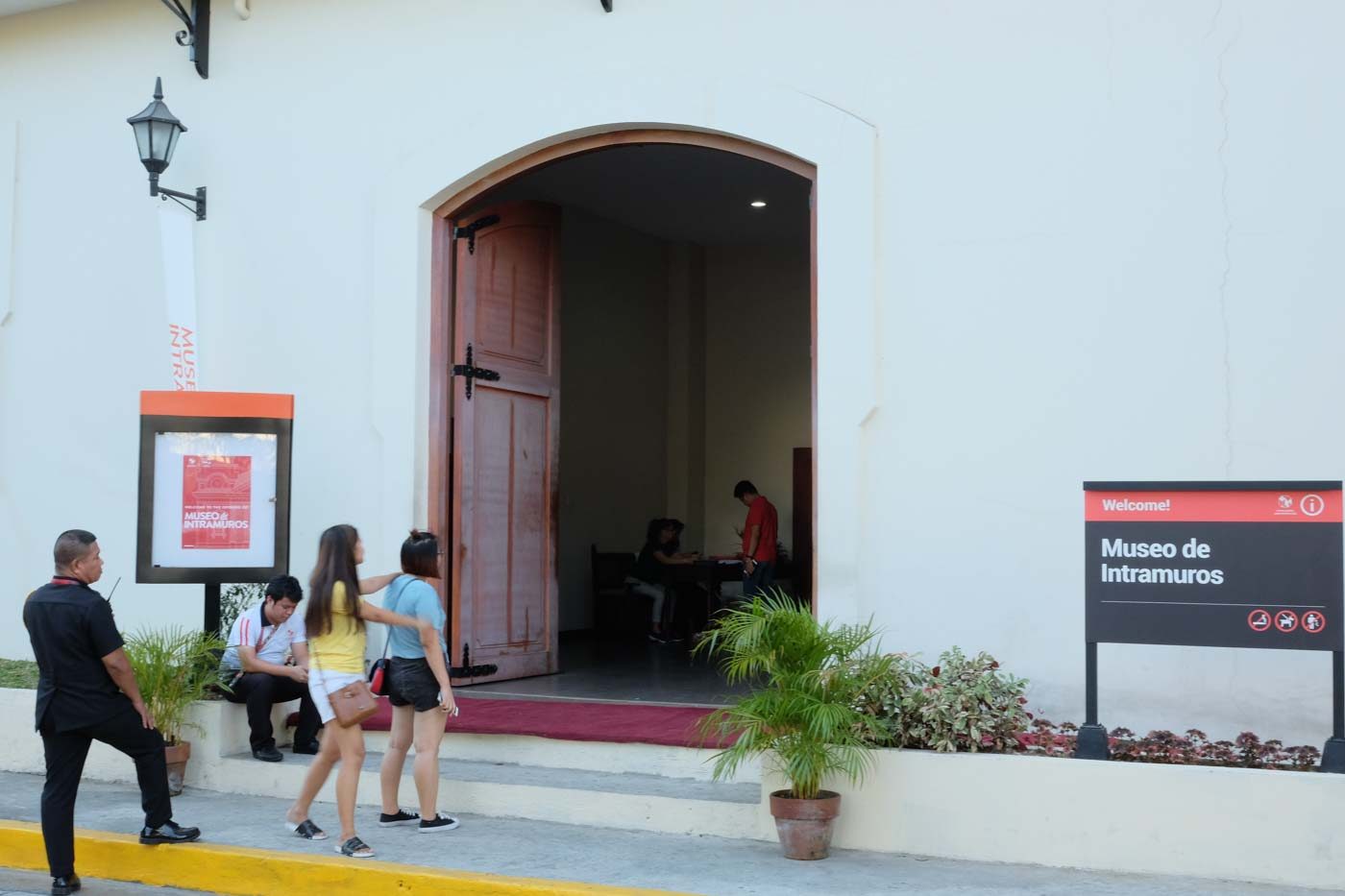
More lie in store for the museum’s visitors since what’s on display now amount to only 30% of the IA’s collection.
The 3rd floor will also eventually house a library that is envisioned to be a “knowledge center on Intramuros, heritage, and art,” said Asido.
Things are definitely happening in Intramuros, and a stop at its new museum puts you right in the middle of it. – Rappler.com
Make the most out of your visit to the walled city by using this Zen rooms promo!
Add a comment
How does this make you feel?
There are no comments yet. Add your comment to start the conversation.